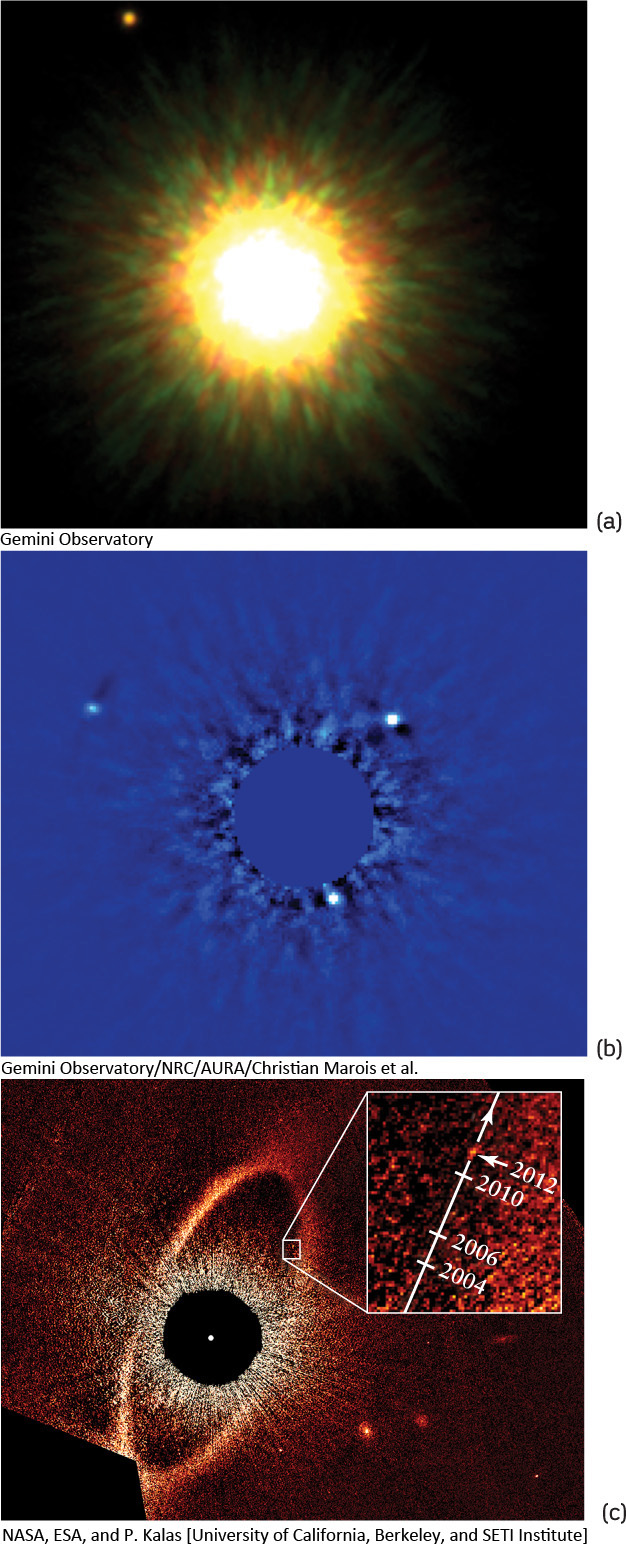
Figure 4-18 RIVUXG First Direct Images of Extrasolar Planets Orbiting Another Star Since exoplanets are typically lost in the overbearing glow of their host stars, directly observing exoplanets orbiting other stars is extremely challenging. (a) At a distance of about 500 ly away, the giant exoplanet visible in the upper left orbiting 1RXS is about 8 times more massive than Jupiter and orbits at a great distance—nearly 300 AU—from its star. (b) This image shows the first family of exoplanets ever captured, with three planets visible as tiny white dots with the bright central star blocked out. (c) This false-color composite image, taken from space with the Hubble Space Telescope, reveals the orbital motion of the planet Fomalhaut b following a 2000-year-long, highly elliptical orbit. The black circle at the center of the image blocks out the light from the bright star, allowing reflected light from the debris belt left over from formation of the planetary system and this planet to be photographed.